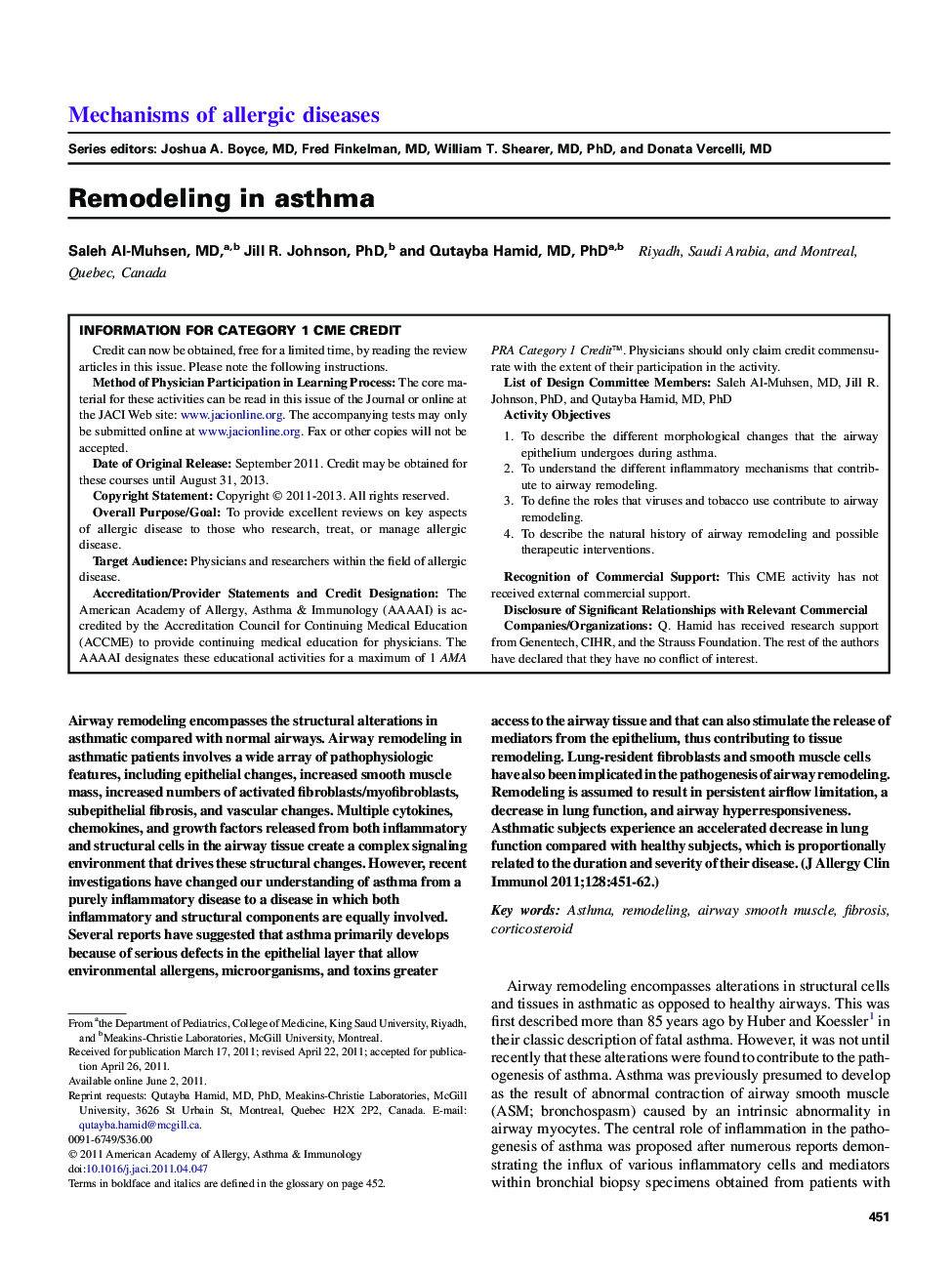| Article ID | Journal | Published Year | Pages | File Type |
|---|---|---|---|---|
| 3198840 | Journal of Allergy and Clinical Immunology | 2011 | 12 Pages |
Airway remodeling encompasses the structural alterations in asthmatic compared with normal airways. Airway remodeling in asthmatic patients involves a wide array of pathophysiologic features, including epithelial changes, increased smooth muscle mass, increased numbers of activated fibroblasts/myofibroblasts, subepithelial fibrosis, and vascular changes. Multiple cytokines, chemokines, and growth factors released from both inflammatory and structural cells in the airway tissue create a complex signaling environment that drives these structural changes. However, recent investigations have changed our understanding of asthma from a purely inflammatory disease to a disease in which both inflammatory and structural components are equally involved. Several reports have suggested that asthma primarily develops because of serious defects in the epithelial layer that allow environmental allergens, microorganisms, and toxins greater access to the airway tissue and that can also stimulate the release of mediators from the epithelium, thus contributing to tissue remodeling. Lung-resident fibroblasts and smooth muscle cells have also been implicated in the pathogenesis of airway remodeling. Remodeling is assumed to result in persistent airflow limitation, a decrease in lung function, and airway hyperresponsiveness. Asthmatic subjects experience an accelerated decrease in lung function compared with healthy subjects, which is proportionally related to the duration and severity of their disease.
